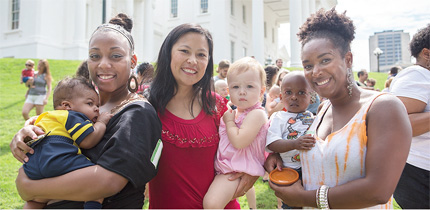
Special to the Trice Edney News Wire from the Richmond Free Press
(Trice Edney Wire) – More mothers in the United States are breastfeeding their babies, a practice that could potentially save billions in health care costs, the Centers for Disease Control found in a new study.
More hospitals are enabling and encouraging mothers and babies to stay closer together after birth, the CDC noted in the study released last week, describing the practice as imperative for the breastfeeding rate to continue rising.
Researchers and doctors often tout lower risks for ear and gastrointestinal infections, diabetes, obesity and other chronic diseases among those who were breastfed. It also can lower the risk of breast and ovarian cancer in mothers.
From 2000 to 2010, more babies were breastfed from birth, at six months and at 12 months, data from the agency show. While 35 percent of babies were breastfed at six months in 2000, that figure climbed to 49 percent in 2010, and 27 percent of babies still breastfeeding at 12 months was up from 16 percent over that same decade.
Breastfeeding could save more than $2 billion in annual medical costs if all recommendations were met, researchers calculated. The American Academy of Pediatrics recommends babies be exclusively breastfed for the first six months and that mothers continue to breastfeed in combination with complementary foods until age 12 months.
“We know that more breastfeeding means healthier moms and healthier babies,” said CDC researcher Jessica Allen.
About 75 percent of babies in the United States start out breastfeeding, but by six months, only 15 percent exclusively breastfeed, according to CDC data.
“The period right after a baby is born is a critical time for establishing breastfeeding,” Janet Collins, the director of CDC’s Division of Nutrition, Physical Activity and Obesity, said in a statement.
Hospitals reported in 2011 that 37 percent of babies “roomed in” with their mothers for at least 23 hours a day after birth, up from 30 percent in 2007. The percentage of hospitals in which mothers had skin-to-skin contact with their newborns increased to more than 54 percent in 2011 from 41 percent in 2007.












